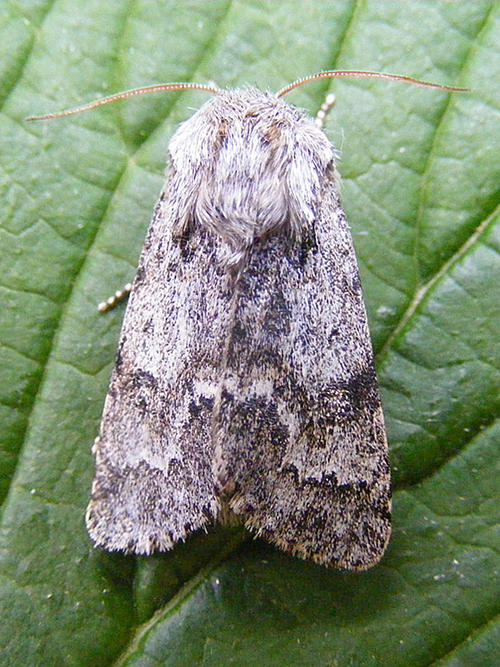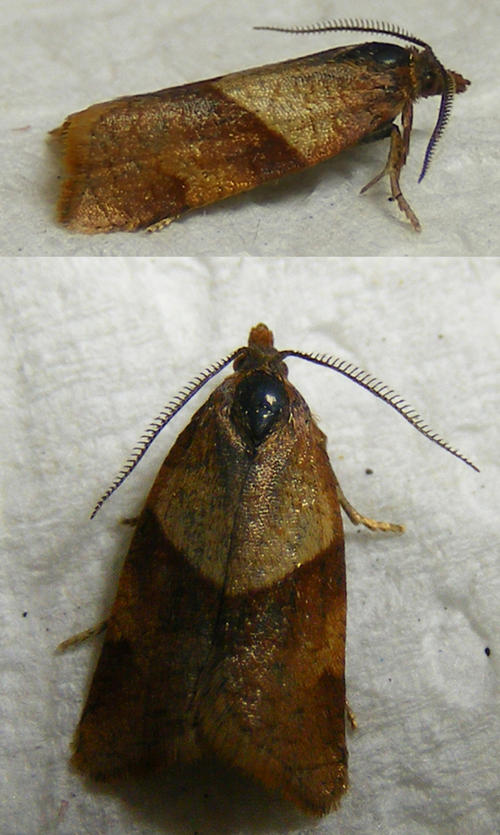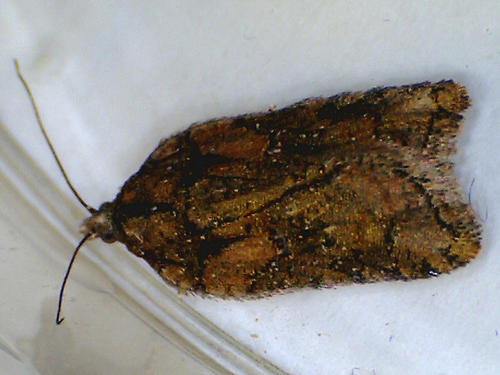A Teme Valley moth-ing update
Danny Arnold , Chairman of the Teme Valley Wildlife Group
The Teme Valley is host to some of the most pristine and diverse habitat in Worcestershire. In fact, there are only but a handful of habitat types found in the County that are NOT found in the Teme Valley and environs. As such, the area abounds with bio-diversity in every aspect of flora and fauna. Yet, in reality, when it comes to biological recording, the Teme Valley, is very much, the forgotten corner of Worcestershire. As a way of emphasising this point, on the Lepidoptera front, the fourth ‘first record for Worcestershire’ has shown up in the Teme Valley in less than two years. Though concerted effort on two trapping sites, one each side of the Valley, four ‘new’ moth species have been recorded in the County for the first time.
In July 2009, at the Worcestershire Wildlife Trust’s Hunthouse Wood reserve the tiny 496a Coleophora adjectella was taken by Patrick Clement during a scheduled Teme Valley Wildlife Group monthly trapping session. Following genitalia dissection, Tony Simpson, the Worcestershire County Moth Recorder, accepted the specimen onto the Worcestershire County list. This moth is typically found in the south-east England where the main food plant is Blackthorn. MOGBI (Emmet 1996) indicates that continental authors also include Hawthorn and, interestingly, Wild Cherry, all of which are found in Hunthouse Wood.
Since that time the remaining ‘firsts’ have all come from the South side of the Valley at the writer’s constant effort site at Upper Rochford. In June 2010, a single specimen of the macro moth 2286 Light Knot Grass Acronicta menyanthids came into one of five Skinner traps being run on the site over night. With the habitat all wrong for this species, it being an upland/damp moorland feeder, it almost certainly found its way down into the Teme Valley from Clee Hill, from where it has been recorded in Shropshire. This moth is a definite ‘northern’ species with north Worcestershire being right on the edge of its geographical territory.
Less than a month later in July 2010, another suspected migrant off the Clee came to another of the five traps. This time it was the small ‘micro’ moth, 1008 Philedone gerningana. Once again, this is another upland/acid moorland feeder, having a very similar appearance to the far more common Light Brown Apple Moth which is found in the Valley. The main visual difference between the two being the bipectinate-ciliate antennae.
Then in mid January 2011, during a three night mild spell, which saw the first moths appear in the traps for several weeks, a small Tortrix moth came into a light trap. It was at first considered to be a form of Acleris hastiana, a moth of variable colouration and one of the very few micro moths on the wing at this time of year. However, not feeling ‘quite right’, it was genitalia determined to confirm yet another County first: 1059 Acleris abietana.
A.abietana was first located in the UK in the mid 1960’s where it is thought to have come in on firs from Scandinavia destined to be planted in Scotland. The NBN Gateway map shows just three records from around the Perthshire area and one close to Kielder Water. There is also known to be one additional record in 2008 from Herefordshire, which was the most southerly record for the species. Some sources infer additional UK records; though appear not to be necessarily publically documented. Never the less, this is certainly a UK scarcity, and again, an excellent record for the Worcestershire list.
It may be no coincidence that three of these four species are apparently right on the edge of their Southern geographical limit, with the forth being right at the North of its UK limit. And in all four cases the Teme Valley has the habitat to hold them.
In addition to these impressive finds during the last two years, the Teme Valley has also produced numerous 2nd and 3rd moth species records for Worcestershire, all going to emphasise the biological importance of this area in terms of specialist habitat diversity and its condition.
In 2011, the Group is looking to expand their moth trapping sites into totally unrecorded new habitats within the area. A circular request to the people on the Teme Valley Wildlife Group emailing list, came up with ten responses from around the Valley with permissions for new areas to trap.
The Teme Valley oozes with tiny tracts and parcels of land that have remained unspoilt and relatively untouched for many years and it is these that are going to be the focus of attention. We already know from the conservationists the importance of building ‘wildlife corridors’ for the long term protection of species. The Teme Valley is the living blue print!
Who knows what wildlife gems this area will bring forth in 2011?
What is certain is that this ‘forgotten corner of Worcestershire’, is slowly but surely putting itself on the map....literally!
Reference
Emmet, A. Maitland, (Ed). 1996. The moths and butterflies of Great Britain and Ireland. Volume 3, page 221. Harley Books.
Images
Fig.1. Light Knot Grass Acronicta menyanthids. Picture ©Danny Arnold
Fig.2. Philedone gerningana. Picture ©Danny Arnold
Fig.3. Acleris abietana. Picture ©Danny Arnold


